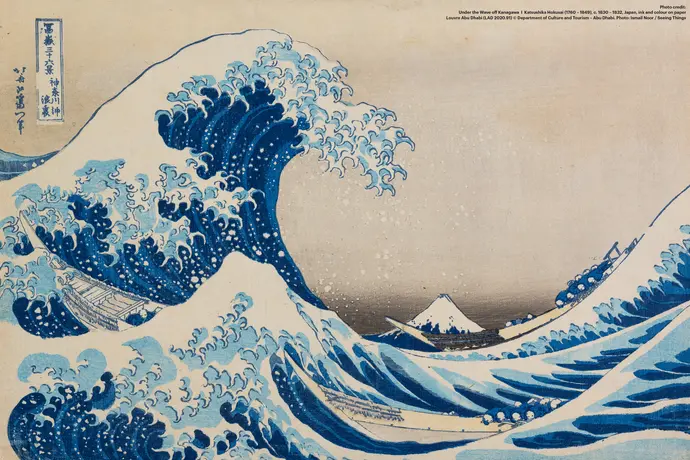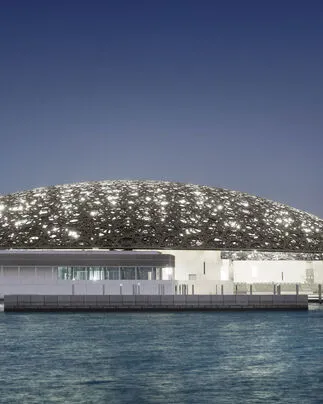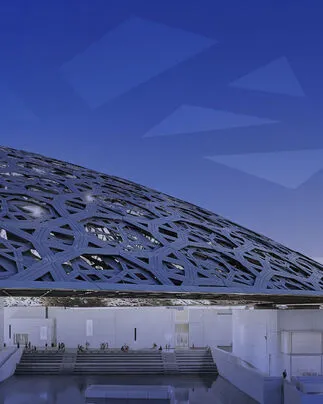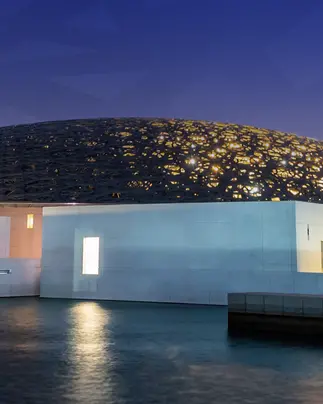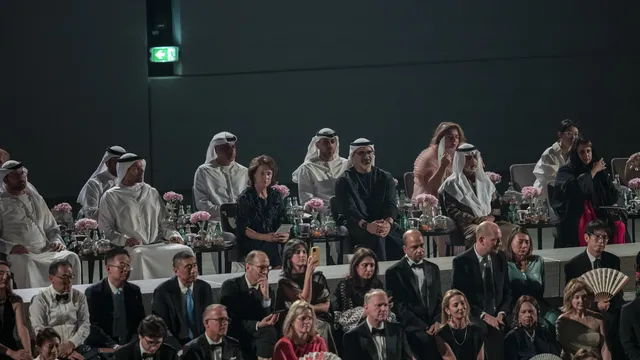Louvre Abu Dhabi has announced its latest international exhibition, Stories of Paper, organised in partnership with Musée du Louvre and France Muséums, in collaboration with 16 French and international institutions and private collections. Set to run from 20 April to 24 July 2022, the exhibition explores the vast range of artistic expressions of paper, with the aim of cultivating the visitors’ deeper knowledge of a familiar, yet ever more distant material. Approximately 100 artworks and objects, including books, manuscripts, drawings, a reproduction of a house and 13 contemporary artworks and installations made of paper, will be on display. These come mainly from the collections of Musée du Louvre, as well as 15 other leading cultural institutions and private collections including Louvre Abu Dhabi, Bibliothèque nationale de France, Centre Georges Pompidou, Sharjah Art Foundation and Zayed National Museum.
Stories of Paper is curated by Xavier Salmon, General Curator and Director of the Department of Drawings and Prints, and Victor Hundsbuckler, Curator at the Department of Drawings and Prints at the Musée du Louvre, with the support of Dr. Souraya Noujaim, Director of Scientific, Curatorial and Collections Management at Louvre Abu Dhabi.
Manuel Rabaté, Director of Louvre Abu Dhabi, said: “It’s entirely appropriate that paper should be the subject of Louvre Abu Dhabi’s second exhibition of 2022 - exploring a single medium and the specific techniques that encompass it. The history of paper, an invention that transcended geography in its journey from East to West while transforming cultures and societies in the process, exemplifies the stories of cultural interaction and intellectual exchange that the museum is committed to examining.”
The exhibition will take visitors on a journey of the history of paper spread across 12 sections, all of which highlight the key qualities and varied use of paper across centuries with immersive scenography. The themed sections include Plant-based origin, A Humble Material, Colour, Movement, Relationship with Light, An Untruthful Material, Memory, Fragility and Resilience, Space, Possibility of a Collection, A Medium for Reproducing Artworks, and A Malleable Medium. The exhibition will allow visitors to understand the tools and mechanisms used to create paper, while inviting the audience to explore different paper materials through the mediation devices.
Xavier Salmon, General Curator and Director of the Department of Drawings and Prints at the Musée du Louvre, said: “If there is one material that is a common good for the human race, it is most certainly paper. Paper was invented in China around 200 B.C., and rapidly made its way to Korea and Japan—then eventually along the Silk Road. From there, the Islamic world absorbed this material, and stretched its use across the Middle East and along the coasts of the Mediterranean. Years later, in the 11th century, the first paper mills were documented in Al Andalus. Shortly after, in the 13th and 14th centuries, the advancement of mass paper production took place in Italy and France and the demand for paper grew expeditiously worldwide. Stories of Paper seeks to explain why paper, a common yet precious good, was quickly adopted and sought after by cultures from every part of the world.”
Victor Hundsbuckler, Curator, Department of Drawings and Prints, at the Musée du Louvre, said: “This exhibition reflects on paper being one of humanity’s most important inventions, helping to document and preserve material for thousands of years. Our ambition is to propose a global history of paper to prove that this medium is part of a common cultural heritage for people from the East and the West and to develop a definition of paper that could be the universal thread between all the different cultural eras of the world.”
Highlights of the exhibition include a selection of artworks from Louvre Abu Dhabi’s collection including Pablo Picasso’s Portrait of a Woman, 1928, two Japanese prints by artist Katsushika Hokusai, and a 13th-century Double page from De Materia Medica. Highlights from international lenders include a panorama on seventeen panels of Carmontelle’s Figures Walking in a Parkland, c. 1795 (Musée du Louvre), a 19th-century manuscript folded in the manner of a screen from Burma (Musée des arts asiatiques Guimet) and Munāğāt ʿAlī, a Quran written in fingernail calligraphy (Bibliothèque nationale de France). Other highlights include artworks by prominent contemporary Emirati and Middle Eastern artists, such as Hassan Sharif’s Dictionary, 2015 (Sharjah Art Foundation), Dana Awartani’s He Is who Created The Heavens and Earth in Six Days, 2005 (Zayed National Museum) and Mohammed Kazem’s Scratches on Paper, 2011 (Gallery Isabelle van den Eynde). Visitors will be also able to view, in Louvre Abu Dhabi’s Lower Plaza, the Labirinto e Grande Pozzo by Italian artist Michelangelo Pistoletto – an interactive contemporary installation that explores movement as a key characteristic of paper.
Dr. Souraya Noujaim, Scientific, Curatorial and Collections Management Director at Louvre Abu Dhabi, said: “Stories of Paper offers a series of poetic odes to matter, technique, space, form, and sound. Odes to a multifaceted material, a vehicle for the emergence of new worlds, and a witness to economic and social upheaval. This exhibition also examines the question of an occasionally contradictory modernity. And yet, while today’s technologies unlock infinite possibilities to the dematerialisation of art, our five senses continue to act as our main reference points.”
Details of the rich cultural and educational programming accompanying Stories of Paper will be announced at a later date. For more information about the exhibition and to book tickets, please visit louvreabudhabi.ae or call Louvre Abu Dhabi at +971600565566. Entrance to the exhibition is free with the museum’s general admission tickets. Admission to the museum is free for children under the age of 18.


